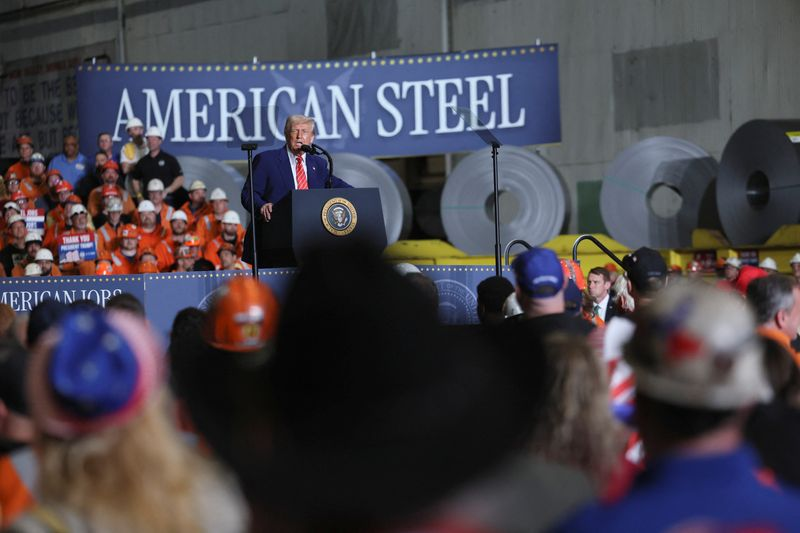In a bold and controversial move, US President Donald Trump has announced a dramatic increase in tariffs on steel and aluminium imports, doubling the rate from 25% to 50%. The decision, which takes effect on June 4, is aimed at strengthening the American steel industry but has drawn swift backlash from key allies and global trade partners.

Speaking at a rally in Pennsylvania, Trump declared the tariff hike as a necessary step to “secure the steel industry in the United States.” The announcement was made near Pittsburgh, a historic hub for American steel, where he also promoted a significant $14.9 billion deal between Nippon Steel and US Steel. Trump hailed the partnership and the new tariffs as twin victories for American workers, particularly those in the Rust Belt region.
In a post on social media later that evening, Trump clarified that the 50% tariff would also apply to imported aluminium, intensifying a broader trade stance that mirrors his earlier approach during his first term in office.
Following the announcement, shares of Cleveland-Cliffs Inc, a major American steelmaker, surged by 26% after market close, reflecting investor optimism about higher domestic profits amid reduced foreign competition. However, the implications of the tariff increase stretch far beyond Wall Street.
The Canadian Chamber of Commerce condemned the decision, calling it “antithetical to North American economic security.” Chamber President Candace Laing warned that disrupting long-standing cross-border supply chains would come at a significant cost to both Canadian and American industries.
Australia, another close ally of the US, also criticized the move. Trade Minister Don Farrell labeled the tariffs as “unjustified” and “not the act of a friend.” He argued that such protectionist policies hurt consumers and businesses dependent on global trade and promised continued diplomatic efforts to reverse the measure.
This latest escalation in trade restrictions follows Trump’s accusation that China had failed to honor a prior agreement to roll back tariffs and trade restrictions on critical minerals. The renewed trade war signals a deepening divide between the US and several key economic partners.
The United States currently stands as the world’s largest importer of steel, excluding the European Union, with 26.2 million tons brought into the country in 2024, according to the Department of Commerce. This massive reliance on foreign steel means the new tariffs are likely to trigger a broad increase in domestic steel and aluminium prices, affecting industries ranging from construction to consumer goods.
Tariffs on steel and aluminium were among the first policy tools Trump reintroduced after taking office in January. The 25% tariffs initially implemented in March covered a wide range of products under Section 232 national security authority. These included not only raw metals but also finished and derivative goods such as air conditioner coils, frying pans, door hinges, and horseshoes.
Data from the US International Trade Commission shows that the total value of imported steel and aluminium products in 2024 stood at $147.3 billion, with aluminium making up nearly two-thirds of that figure.
Trump’s decision to double tariffs draws a sharp contrast to his earlier trade policy milestones. In 2018, during his first term, punitive tariffs on Chinese goods totaled $50 billion. Now, with a much larger volume of imports in question, the stakes are even higher.
As June 4 approaches, businesses, consumers, and foreign governments alike are bracing for the ripple effects of this aggressive trade move. While Trump frames the measure as a win for American workers and industries, critics warn it could ignite a global backlash and undercut the very economic security it aims to protect.
